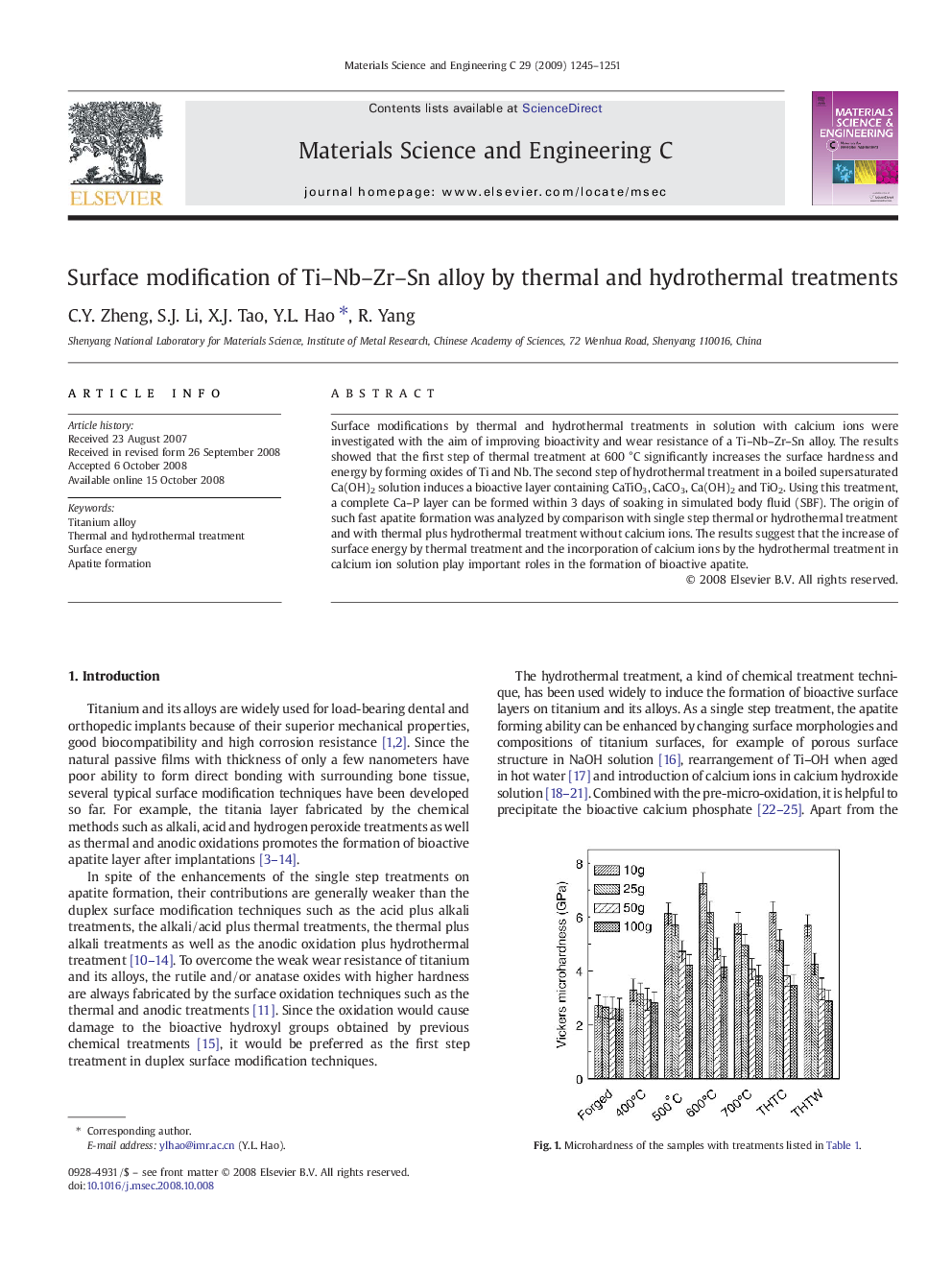| Article ID | Journal | Published Year | Pages | File Type |
|---|---|---|---|---|
| 1430903 | Materials Science and Engineering: C | 2009 | 7 Pages |
Surface modifications by thermal and hydrothermal treatments in solution with calcium ions were investigated with the aim of improving bioactivity and wear resistance of a Ti–Nb–Zr–Sn alloy. The results showed that the first step of thermal treatment at 600 °C significantly increases the surface hardness and energy by forming oxides of Ti and Nb. The second step of hydrothermal treatment in a boiled supersaturated Ca(OH)2 solution induces a bioactive layer containing CaTiO3, CaCO3, Ca(OH)2 and TiO2. Using this treatment, a complete Ca–P layer can be formed within 3 days of soaking in simulated body fluid (SBF). The origin of such fast apatite formation was analyzed by comparison with single step thermal or hydrothermal treatment and with thermal plus hydrothermal treatment without calcium ions. The results suggest that the increase of surface energy by thermal treatment and the incorporation of calcium ions by the hydrothermal treatment in calcium ion solution play important roles in the formation of bioactive apatite.
